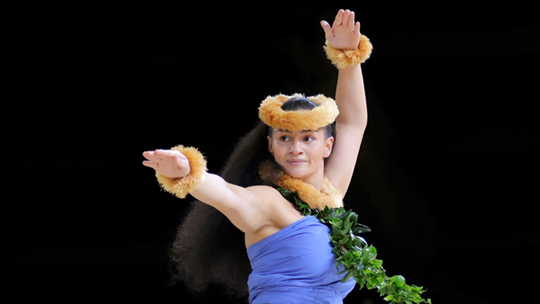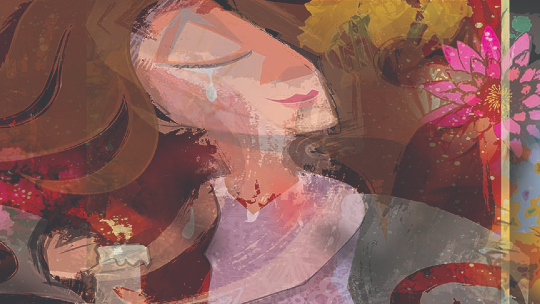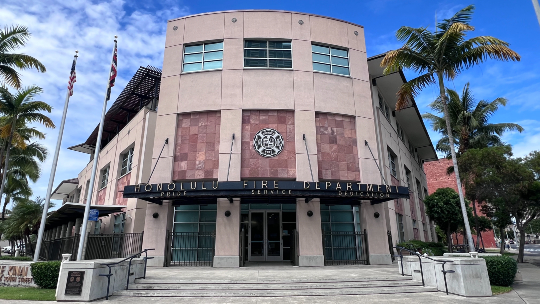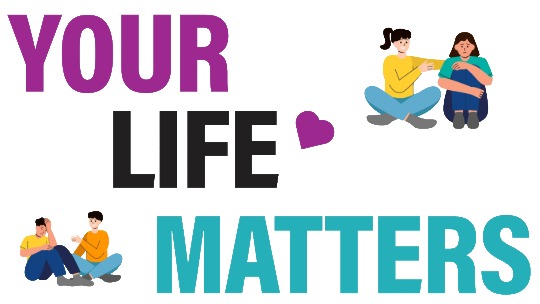At the age of 40, Kapua Beyer Cavaco had just been through a traumatic medical emergency and didn’t want to endure another. But the mother of two young children and licensed clinical psychologist on Maui knew she should listen to her husband’s advice. As her doctor was about to leave the exam room, Beyer Cavaco took a deep breath and asked her doctor, “Can you check something before you go?”
Two weeks later, a biopsy confirmed that she had invasive ductal carcinoma, or breast cancer. “We’re so lucky we caught it early,” Beyer Cavaco says. “Imagine if I hadn’t spoken up. This could have been a very different story.”
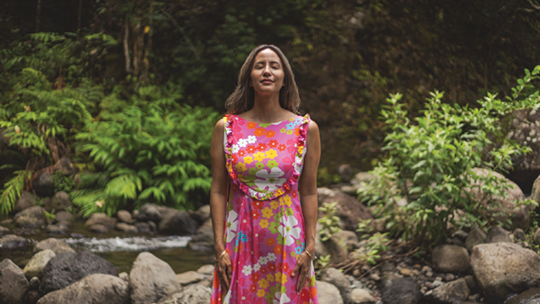
Soaking in the bird song, flowing water, and rustling leaves.
A time of change
In 2020, in the midst of the pandemic, Beyer Cavaco and her family moved from Oahu to Maui to be closer to her husband’s family. Professionally, she was transitioning from working with underserved, rural populations at community health centers to building her own private practice.
When she wasn’t working, she was shuttling her daughters to school and activities. “At the time, I was busy, but I’d like to think I was healthy,” she says. “I did my best to eat well and stay active.”
Three years later, she experienced excruciating abdominal pain so sudden and severe that she went to the emergency room. “We know now it wasn’t a cyst exactly. It was a growth on my ovaries, and it ruptured,” says Beyer Cavaco. “During a follow-up visit with my doctor, we learned it was endometriosis.” Endometriosis, a disease where tissue similar to the lining of the uterus grows outside the uterus, can cause immense pain. There’s no prevention or cure.
She shared other symptoms like fatigue with her doctor and did some blood work. “The doctor mentioned that since I was 40, I should do a mammogram, and I said sure; it hadn’t really been on my radar otherwise,” she says. “A few weeks later, I actually noticed a small lump on my breast, but my mammogram wasn’t scheduled until the end of the year.”
When Beyer Cavaco went to see her ob-gyn about her endometriosis and her appointment was over, her husband, who happened to be there with her, nudged her.
“Ask him about the lump.”
Looking back, Beyer Cavaco can’t believe she almost didn’t say anything. “We were done with our appointment and I didn’t want to ask for one more thing,” she says. “But I never want my own patients to feel like that. Take up your doctor’s time. That’s why we’re here. Take up space.”
A time of healing
Two weeks after her diagnosis, Beyer Cavaco had surgery to remove the cancer. “Then, I was on the fence about going through with radiation,” she says. “But I wanted to give myself the best chance for my girls, ages 4 and 7 at the time, so I did it five days a week for four weeks. It was tough, but I’m glad I did it.” In addition, for the next five years, she’ll receive shots once a month and take a daily medication to help keep the cancer from recurring. Though it puts her in medical menopause and is hard on her body, she’s determined to do what’s necessary to stay cancer-free.
Beyer Cavaco welcomed her children’s questions and curiosity throughout the whole process. She spoke in ways she thought her young daughters would understand. “We’d talk about my boo boo, how my cells were growing too fast, and that they needed to be removed,” she says. They saw her scars after her surgery and went with her and her husband to radiation treatments. “We spent a lot of time cuddling during those months,” she says. “It was their way of helping me heal, even if they didn’t know that’s what they were doing,”
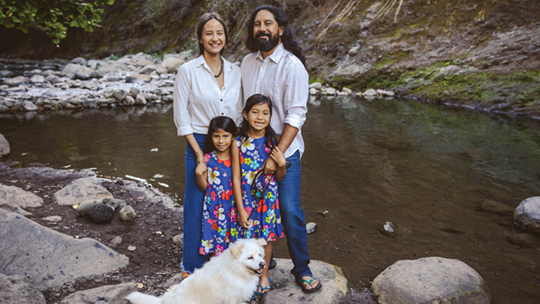
Beyer Cavaco and her biggest supporters, her husband, daughters, and dog, Fugu.
A time to connect with nature
While surgery successfully removed all the cancer and radiation was complete, Beyer Cavaco was exhausted. “There were all these parts of me that needed tending: my mind, body, and spirit,” she says. “I had the opportunity to try forest bathing and then I realized what was missing: the “aina.”
In 2024, she was guided by Phyllis Look, Hawaii’s first certified forest therapy guide and founder of Forest Bathing Hawaii. Look collaborated with volunteer Joy Galatro and Maui Forest Bathing to create the free Healing Trees Maui series to support Maui after the 2023 wildfires. “I signed my parents up for forest bathing first and they raved about it!” Beyer Cavaco says. “They came home calm and happy, and said that it was so good to connect with nature. So, I knew I needed to try it.”
The result was transformative. “Forest bathing is simply slowing down in order to be in connection with nature,” says Beyer Cavaco. Participants are guided in a group setting to engage with the natural environment through their senses, and spend time in quiet contemplation and sharing. “I’d walked in nature before, but for the first time I felt like I was connecting with nature on a cellular level. And as a Kanaka Maoli, I feel very connected to my ancestors through the aina,” she says. “Some part of me had forgotten, and it felt like coming home.”
Her experience was so powerful that she trained to become a certified forest therapy guide. “My dream is for forest therapy to become preventative health care here in Hawaii,” she says. “For me, it’s all connected, and reciprocity with nature is health.”
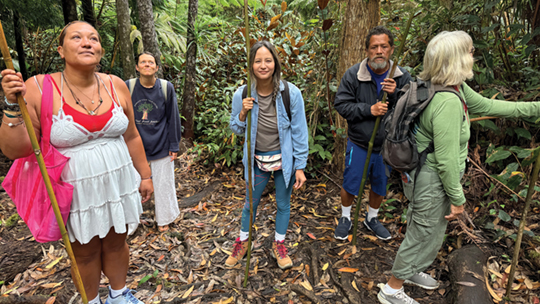
Guiding nonprofit, Root & Rise Hawaii team members at the Kona Cloud Forest Sanctuary.
And after everything she’s been through, her takeaway is to listen. “Trust yourself,” she says. “Sometimes we’re all in our heads. My diagnoses forced me to trust myself. The best thing we can do is listen to our bodies.”
Learn more about Beyer Cavaco’s forest bathing experience and how it can benefit your health and well-being in forest bathing: connecting with what matters.
Photos by Lexi Figueroa
FA25F

